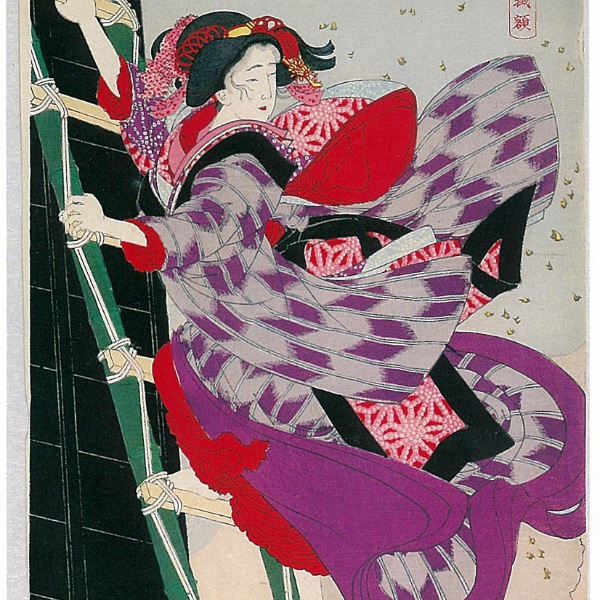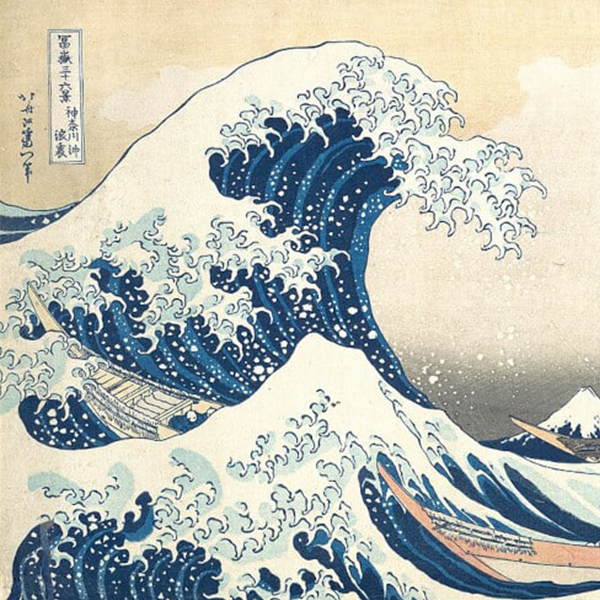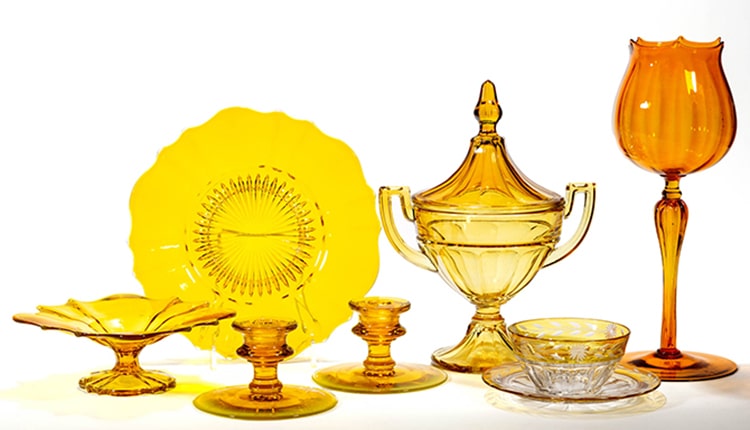
Photo: Jeffrey S. Evans & Associates
This post may contain affiliate links. If you make a purchase, My Modern Met may earn an affiliate commission. Please read our disclosure for more info.
Have you ever looked into your grandmother’s china cabinet and found a few pieces of lightly tinted glassware? Ever wonder what these curiously colored objects were or where they came from? Well, wonder no more! These varied forms of rainbow-tinged glassware are called Depression glass. They were incredibly commonplace when they first started being sold in the late 1920s, and truly came in a rainbow array of colors and patterns. Despite their historic abundance, these pieces continue to brighten modern kitchens and have a high collectible value. Let’s explore how Depression glass became the popular, beloved collector's item it is today.
What is Depression glass?
According to the National Depression Glass Association, Depression glass refers to American-manufactured glassware that was first produced in the mid-1920s through the end of the 1940s, as glassware manufacturers developed the ability to produce inexpensive luncheon and dinner glass. Most often, Depression glass was transparent with colored tints that gave the pieces a bright quality; however, occasionally, manufacturers would create opaque collections, like the milk white vases, teacups, and pitchers that are popular today. The most common colors that were produced were amber, canary yellow, pink, and green. Less common colors include red, amethyst, jadeite, cobalt, and opaque black.

Inexpensive manufacturing technique applied to Depression glass (Photo: Public Domain)
Gene Florence, who wrote one of the seminal texts on Depression glass, actually divides this type of glassware into two different categories—Depression and Elegant. Elegant glass was manufactured by a select group of “Hand” houses, where employees would help refine the glass’s imperfections when it first came out of the mold. Depression glass, however, was meant for mass production, and so had significantly more imperfections, including obvious seams and bubbling.
Economic Hardship and Advertising Techniques
Interestingly, Depression glass was actually low-to-average quality, and was often given to consumers for free as premiums to entice customers to continue shopping during the Great Depression, despite the overwhelming economic hardship Americans were facing. Customers could get cups and saucers with carnival games at gasoline fill-ups, movie theaters, and as special gifts with purchase of certain brands or kitchen appliances. This advertising gimmick worked tremendously as people across the United States began seeking out Depression glass to purchase for their homes. The glassware was often sold in sets of a dozen, and were commonly priced at $1.72 per set.
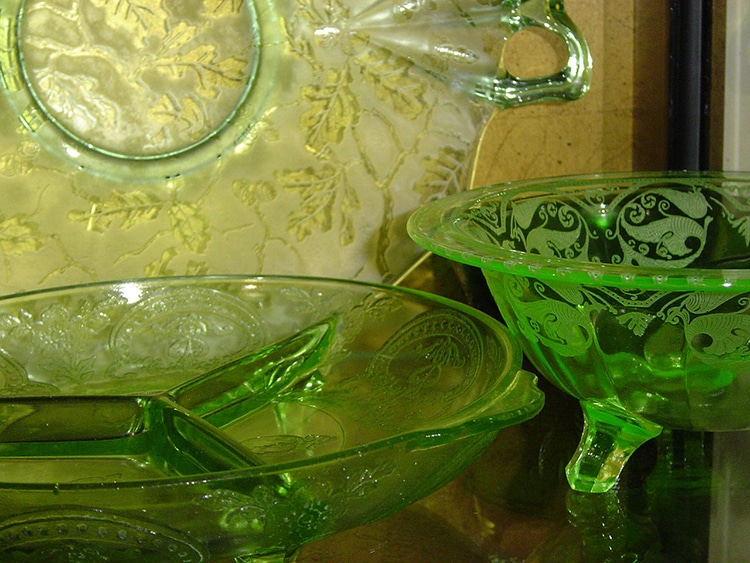
Photo: Wikimedia Commons (CC BY 2.0)
Patterns and Motifs
Aside from the beautiful rainbow of colors that Depression glass comes in, one of the glassware’s most desirable qualities is the myriad of delicate patterns and motifs that these manufacturers created for their pieces. Often, glassware enthusiasts refer to the sheer volume of patterns as “Adam to Windsor”—two pattern styles of Depression glass—to incorporate all of the styles in shorthand. Some popular styles include the Hazel Atlas Glass Company’s Royal Lace pattern and Hocking Glass Company’s Cameo and Mayfair patterns.
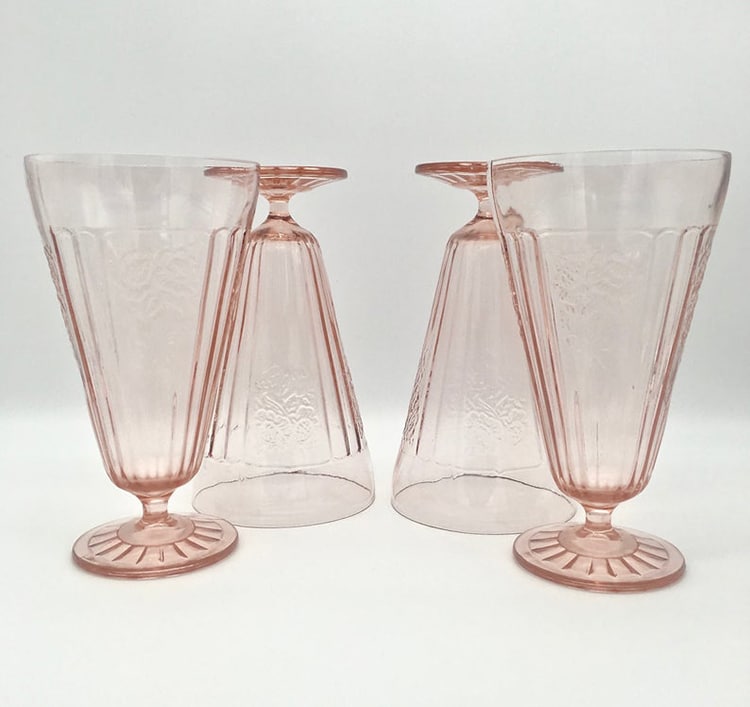
Pink Mayfair Ice Tumblers for sale on Etsy (FoothillsCottage | $146)
Collector Craze
The 1980s saw Depression glass enter the auction market en masse. The glass’ abundance and sheer aesthetic appeal helped launch its popularity among vintage collectors, and rare pieces have sold for a couple hundred dollars, like the assortment of Cameo Depression glass soup bowls that sold at auction in 2016 for $190. However, even an amateur collector with a small budget can afford more common pieces of Depression glass without having to look too far or break the bank.
Depression Glass Antiques Today
Online retailers like Etsy and eBay have a slew of Depression glass available for purchase, although you’ll want to be selective about your choices because of the number of reproductions on the market. Be sure to check for imperfections like bubbling and visible seams to help verify its age. You can also look into which patterns and pieces are commonly reproduced. Don’t be afraid to ask questions about the glass’s provenance, and for more pictures for verification. You can find affordable pieces like an Iris and Herringbone-style vase, a Cherry Blossom-patterned pitcher, and much more on Etsy. In spite of its commonplace history, Depression glass has come to be beloved by collectors and can bring joy to kitchen tables any day of the week.
Scroll down to see a small selection of the wares currently available.
Vase (Iris and Herringbone Pattern)

LucysMidCentury | $24.60
Cream & Sugar Set (Madrid Pattern)
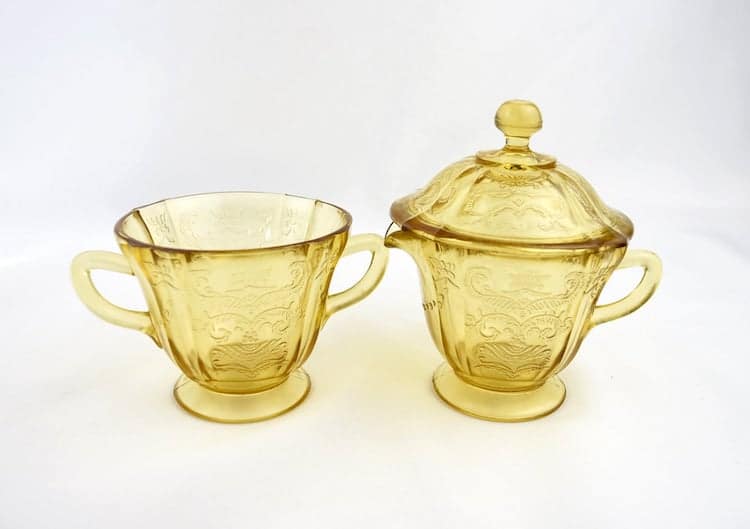
OldVintageTrunk | $12.95
Sherbet or Dessert Glasses (Optic Pattern)
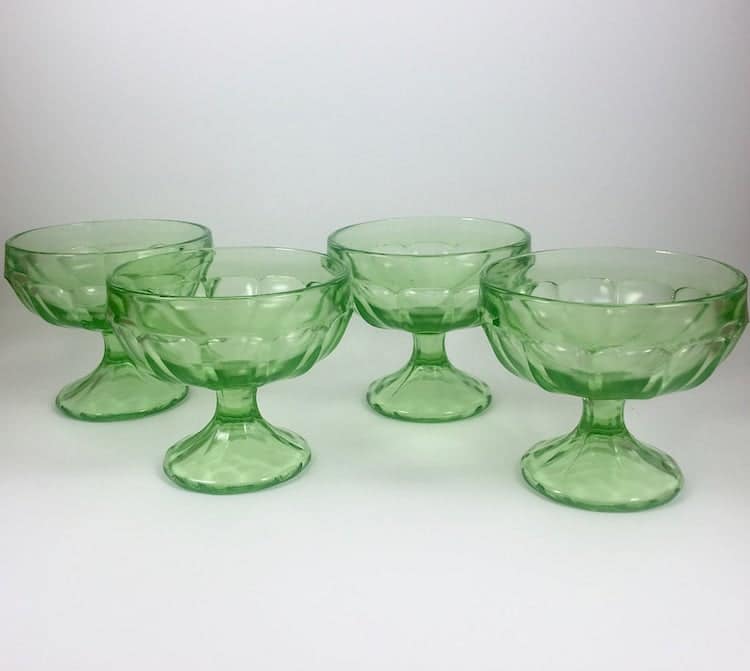
FoothillsCottage | $20.50
Pitcher (Cherry Blossom Pattern)
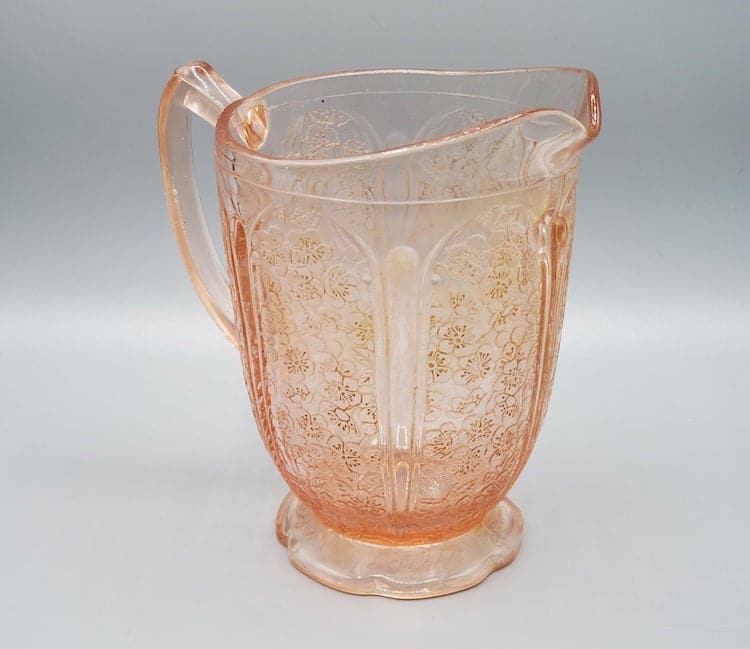
ProvenancePieces | $50
Saucers (Doric Pattern)
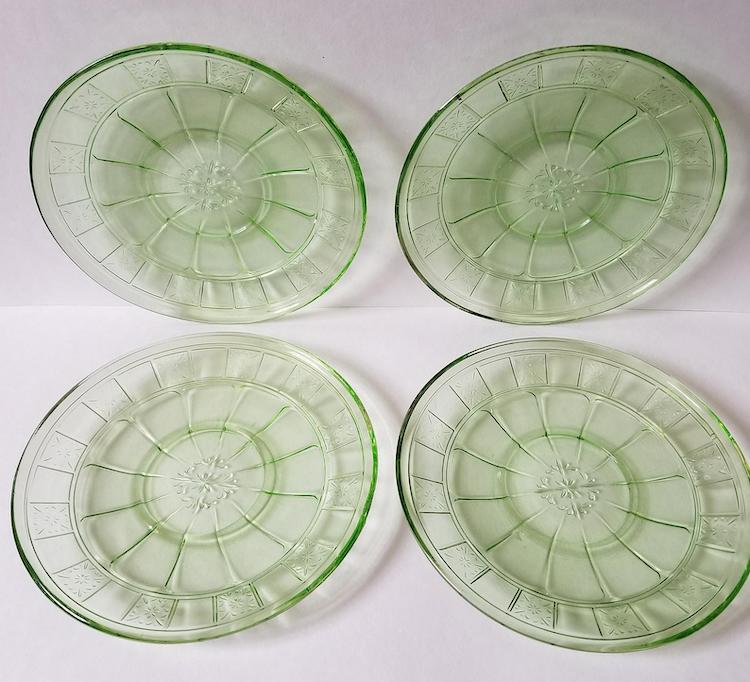
AutieQsAttic | $24
Teacup and Saucer (Cherry Blossom Pattern)
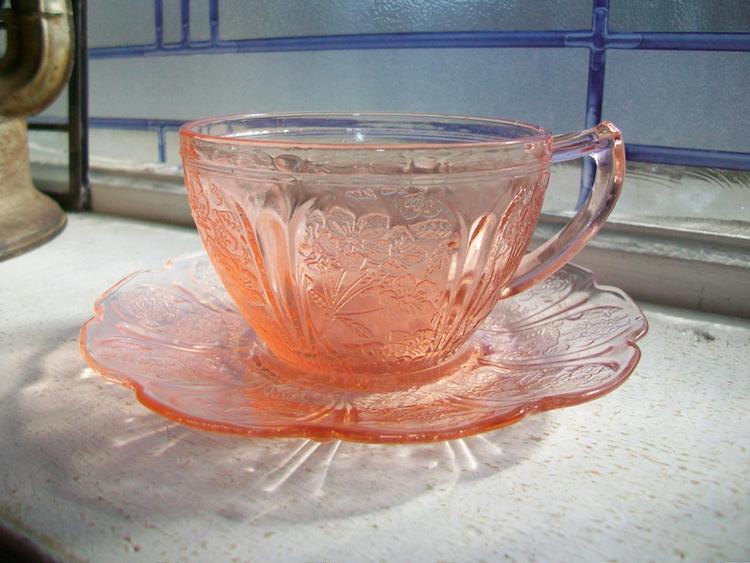
RedRiverAntiques | $18
Related Links:
Illuminated Glass Orchids Celebrate the Exotic Flower’s Delicate Strength
Tracing the Glistening History of Glass Making From Ancient Beads to Contemporary Art
Endangered Butterfly Species Are Immortalized as One-of-a-Kind Glass Sculptures
Glass Artists Craft Stunning Memorial Sculptures From the Cremated Remains of Deceased Loved Ones












































































